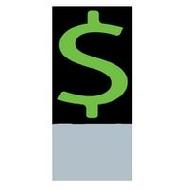
 |
|
| Financial Terms | |
| Negative carry |
|
Information about financial, finance, business, accounting, payroll, inventory, investment, money, inventory control, stock trading, financial advisor, tax advisor, credit.
Main Page: accounting, payroll, inventory control, money, investment, finance, inventory, financial advisor, |
Definition of Negative carry
Negative carryRelated: net financing cost
Related Terms:Net financing costAlso called the cost of carry or, simply, carry, the difference between the cost of financing CarryRelated:net financing cost. Carrying valueBook value. Cash and carryPurchase of a security and simultaneous sale of a future, with the balance being financed Cost of carryRelated: Net financing cost Negative amortizationA loan repayment schedule in which the outstanding principal balance of the loan Negative convexityA bond characteristic such that the price appreciation will be less than the price  Negative covenantA bond covenant that limits or prohibits altogether certain actions unless the bondholders agree. Negative durationA situation in which the price of the MBS moves in the same direction as interest rates. Negative pledge clauseA bond covenant that requires the borrower to grant lenders a lien equivalent to any Positive carryRelated:net financing cost negative cash flowThe cash flow from the operating activities of a business carrying costthe total variable cost of carrying one unit of Loss carrybackThe offsetting of a current year loss against the reported taxable Loss carryforwardThe offsetting of a current year loss against the reported taxable Negative goodwillA term used to describe a situation in which a business combination  carrying costsCosts of maintaining current assets, including opportunity cost of capital. Negative Loan CovenantsLoan covenants designed to limit a corporate borrower's behavior Carrying costThe cost of holding inventory, which can include insurance, Related to : financial, finance, business, accounting, payroll, inventory, investment, money, inventory control, stock trading, financial advisor, tax advisor, credit. |